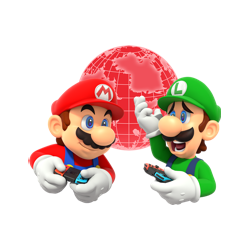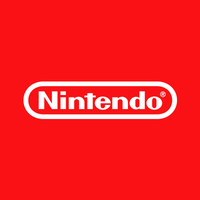The Rise and Rise of the Nintendo Switch
by on 5th Sep 2019 in News

As midnight neared yesterday, Nintendo unleashed a barrage of announcements, from major esports shooters making their way to Switch, to the news that classic SNES games were to be available on the console imminently.
And only hours before that 'Nintendo Direct' video stream - which you can watch in full here - GamesIndustry.biz had noted that a humble Switch screen protector was the best selling item across Amazon's games category. A plastic shield for a screen might be the most pedestrian gaming accessory one could imagine. But when it tops game sales on one of the world's largest marketplaces, it becomes more significant than its function alone.
Indeed, as a recent Thinkum study highlights, August was an extremely good month for Nintendo. Six of the ten best selling games on Amazon were Switch games, with PS4, PC and Xbox One sharing the other four. Nine of the top 20 gaming products, including the likes of peripherals and accessories, were Switch devoted. And then there's all that Nintendo Direct news.
It really does feel like the Switch alone is dominating gaming (outside of mobile, of course) as 2019 pushes deeper into its second half.
The tremendously popular team shooter Overwatch - beloved by esports tournament organisers - is coming to Switch. That is a very big, very polished triple-A game that helps Nintendo assert the Switch as more than a family-friendly or casual gaming platform. Meanwhile the exquisite and left-field '1-bit' mystery game Return of the Obra Din is arriving on the platform, along with all those SNES games. There were a wealth of announcements around Super Smash Bros. - a fighting game with a deceptively accessible appearance that has been embraced by the fighter community as an authentic arcade beat 'em up.
There were so many Nintendo announcements throughout the Direct stream that the press release promoting the news itself reads like a long-form feature. The wealth of news would border on absurd if it weren't so very, very real. Collectively the announcements showcase one thing; the Switch is increasingly a console for every type of gamer.

With Super Nintendo games coming to the Switch, the classic SNES packaging is returning.
And that's a smart move. Even once dominant gaming demographics such as 'hardcore' or 'family' are now arguably niches relative to the entire gaming form's reach; huge niches, but still distinct segments, rather than all-dominant ones. Those traditional gamer demographics still make up vast audiences, but those audiences alone are no longer the majority of the complete gaming user landscape. Nintendo had previously been very successful focusing to a degree on family games. In the midst of the casual gaming movement (before 'casual' became the established norm) the Wii shifted over 101 million units, with titles like Wii Sports spearheading that move to take games beyond the traditional player-base. That's a good way over the PlayStation 3's 87.4 million unit sales through roughly the same era.
And then there was the Wii's follow up. The Wii U - a platform that in physicality and design ethos landed somewhere between the living room gesture control focus of the Wii, and the console-portable crossover that is the Switch - didn't fare so well. The Wii U shifted just 13.56 million units globally, arguably making it a flop.

A new Switch-compatible SNES controller has also been announced for the console.
So when the Switch arrived, launching in March 2017, it was greeted with caution. After the failure of the less than conventional Wii U, could this strange machine with a tablet-like core, break off miniature controllers and a built-in screen really thrive? On release the Switch was greeted with cautious optimism. It's initial game library was far from vast, the OS was basic in its spread of functions, and hardware problems seemed common.
Still, 300,000 units shifted in Japan in the first week. Sales quickly climbed globally, forcing Nintendo to up production and adopt air shipping in place of the usual oversea freight shipping, at a cost of USD$45 (£36) a console. And as of June 30th, 2019, the Switch had shifted 36.87 million units. The Wii moved most of its 101 million units between 2007 and 2013 (though the relatively limited Wii Mini sub-model continued to be produced until 2017).
Looking forward, it could be that the Switch trumps the Wii's sales total, and even the Game Boy's still staggering 118.69 million life time units sales. There is the launch of the Switch lite just around the corner, and Nintendo seems to have managed the worst of the Switch 'controller drift' scandal, which saw owners' controllers for the console start to seriously misbehave.
The Switch has a long way to go, but over two years into its life-cycle, it still appears to be building momentum, broadening its appeal, and establishing an increasingly enviable software library and back-end.
The notion of a 'console war' is arguably now a rather dated concept. But it may be that Nintendo's never-conventional approach will see it as the biggest seller of the current generation.
It's worth noting here that the PlayStation 4 has sold somewhere over 100 million units thus far - but it has a near four-year lead on the Switch, releasing in 2013.







Follow TheGamingEconomy